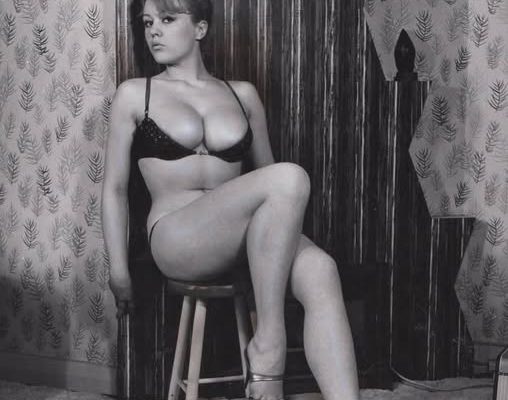
Margaret Nolan’s image is immortalized in one of the most iconic sequences in cinema history—the glistening, gold-painted body in the opening credits of Goldfinger (1964). But behind that dazzling figure was a woman of remarkable depth, humor, and resilience. Often pigeonholed by her looks, Nolan forged a unique and quietly defiant path through British film, television, and visual art. Her life is a tale not just of fame and glamour, but also of subversion, reinvention, and a fight for identity in an industry obsessed with image.
Margaret Ann Nolan was born on October 29, 1943, in Hampstead, London, during the Second World War. Her father, an Army clerk, and her Irish mother raised Margaret between England and Waterford, Ireland, before she returned to London as a young teenager. Nolan trained as a teacher but gravitated toward modeling and acting in the early 1960s. With her statuesque figure, blonde hair, and sultry looks, she quickly became a staple in glamour photography and British pop culture.
Her modeling alias, Vicky Kennedy, gave her early exposure in pin-up magazines, where she embraced the sexually liberated spirit of the Swinging Sixties. But Nolan was never merely content to be objectified—her choices often reflected a sense of irony and awareness that would become a theme in her later work.

In 1964, Nolan landed her most famous assignment: the gold-painted woman in the title credits and promotional materials for the third James Bond film, Goldfinger. While Shirley Eaton played Jill Masterson—the character who dies famously from “skin suffocation” after being covered in gold paint—it was Nolan’s body that appeared in the title sequence, designed by visual artist Robert Brownjohn.
Though she had a small acting role in the film as Dink, Bond’s masseuse, Nolan’s golden silhouette became a cultural touchstone, synonymous with Bond girl glamour and 1960s excess. Yet she later expressed mixed feelings about the role. In interviews, she noted that her contribution was often mistaken for Eaton’s and that the notoriety it brought was both a blessing and a limitation.
Rather than retreat into obscurity or typecasting, Nolan embraced the vibrant British comedy scene of the 1960s and 1970s. She became a familiar face in the Carry On series—a franchise of bawdy, slapstick films that were wildly popular in the UK. Nolan appeared in six Carry On films, including Carry On Cowboy (1965), Carry On Henry (1971), and Carry On Girls (1973), often playing curvaceous bombshells or saucy secretaries.
Her appearances were always infused with a cheeky knowingness. She brought a sense of comic timing and awareness to roles that might have been flat or purely decorative in other hands. Though the films were often dismissed as lowbrow, they remain a crucial part of Britain’s comedic heritage—and Nolan’s contributions were far from insignificant.
Nolan was also a regular on British television throughout the 1970s and 1980s. She had roles in series like Steptoe and Son, The Sweeney, Crown Court, and Budgie. She also worked in theater, which allowed her to stretch her acting chops beyond the stereotypes she was often assigned on screen.
Despite the playful sex-symbol image, Nolan was deeply thoughtful about her craft and the industry’s limitations. She gradually withdrew from acting in the 1980s, frustrated by the lack of substantial roles for women who didn’t fit the narrow mold of youth and beauty.
In a bold and creative pivot, Nolan reinvented herself as a visual artist in the 1990s and 2000s. Drawing on her experience as a model and actress, she created photo collages that explored the objectification of women and the manipulation of the female form in mass media. Her art often featured reworked images of herself from her modeling days—reframed, fragmented, and layered with commentary.
Her work was exhibited in galleries and appreciated for its feminist undertones and autobiographical insight. By reclaiming her image through art, Nolan took back control of a narrative that had too often been written by others.

Margaret Nolan returned to the screen briefly in The Power of Three (2011) and had a small role in Last Night in Soho (2021), directed by Edgar Wright. The casting was no accident—Wright was a fan who wanted to honor her legacy. Sadly, Nolan passed away on October 5, 2020, at the age of 76, just before the film’s release.
Wright paid tribute to her as “an actor, artist and visual icon,” noting how her legacy straddled pop culture and personal empowerment. Though often remembered for the shimmer of gold and the flicker of a Bond girl, Margaret Nolan was so much more—a muse, a comic foil, a feminist artist, and a woman who refused to be reduced to the surface.
Margaret Nolan’s story is a complex, layered one. While the world may remember her golden silhouette, her true brilliance lay in her defiance of easy categorization. She used the tools of image and allure to carve out a voice, both in front of the camera and beyond it. In a career that spanned glamour, comedy, and contemporary art, Nolan proved that even the most iconic images can contain multitudes—and that reinvention is a form of quiet rebellion.


